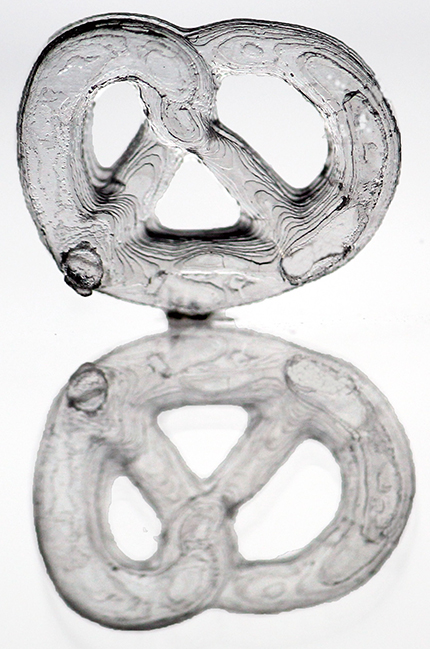Printing glass in 3D
DOI: 10.1063/PT.3.3583
These days it seems you can make anything with 3D printers—but not if you want to make it out of glass. The main complication is that the printers create structures that are rather coarse, at least at the millimeter scale and smaller. For glass, such a rough surface hinders the transmission of light.

NEPTUNLAB/KIT

Now Bastian Rapp at the Karlsruhe Institute of Technology in Germany and colleagues have used off-the-shelf chemicals and a commercially available 3D printer to create transparent structures out of glass that is nearly indistinguishable from pure fused silica glass. The team’s big advance was dissolving large amounts of silicon dioxide nanoparticles—between 30% and 45% by volume—in their polymer “ink.” A $7500 stereolithography printer composed the desired structure layer by layer using the silica-infused polymer. After burning off the polymer, Rapp’s team sintered together the enduring nanoparticles at 1300 °C to create the final solid product (such as the one shown here). Both Raman spectroscopy and x-ray photoelectron spectroscopy confirmed that the printed glass, which was highly transparent for wavelengths above 350 nm or so, had nearly identical optical properties to fused silica.
Printed optical-grade glass could prove useful for lenses, fiber-optic cables, and photonic applications. And because the technique doesn’t require a custom printer, the properties of printed glass should become even more finely tunable as 3D printing technology improves. Rapp hopes to devise a similar nanoparticle–polymer mix for soda-lime glass, which is used for everyday items like windows, windshields, and drinking glasses. (F. Kotz et al., Nature 544, 337, 2017, doi:10.1038/nature22061
More about the Authors
Andrew Grant. agrant@aip.org





